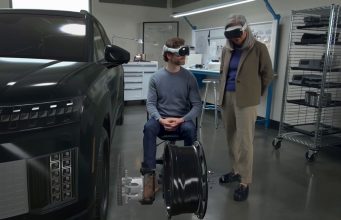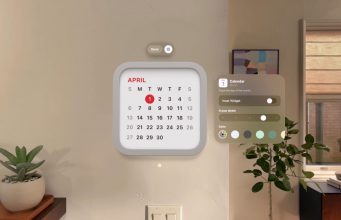Meta's Next Headset Could Have Micro-OLED Panels, Auto IPD Adjustment & Iris Unlock
Meta's ultralight headset could have micro-OLED panels, automatic IPD adjustment, and iris unlock, potential leaks and datamining suggest.


Datamining could reveal key features of Meta's next headset, and a potential leak suggests it will feature micro-OLED panels.
If you missed the news last week, UploadVR reported that Meta is prioritizing shipping an ultralight open-periphery Horizon OS headset with a tethered compute puck in 2026, and might not ship a new traditional form factor Quest until 2027. A few days later, The Wall Street Journal reported that this headset could be priced "less than $1000" and that Meta is talking to Hollywood firms like Disney and A24 to get immersive video content for it.
Now, more details of this headset may have emerged.
VR enthusiast Luna, who regularly inspects the code of the Horizon OS running on Quest headsets, has found references to automatic IPD adjustment and face unlock. Horizon OS v78 PTC seems to have added references to a headset with some sort of automatic IPD/Lens adjustment. pic.twitter.com/m3mOXP39Nq— Luna (@Lunayian) June 6, 2025 Face unlock icon found in Horizon OS v78 PTC.
I'm told this is something likely to be a launch feature on the high-end 2026 device. https://t.co/7YK7xkwsxL pic.twitter.com/FPDVBu8dU6— Luna (@Lunayian) June 6, 2025
Automatic IPD adjustment is available in headsets with eye tracking and motorized lenses such as Apple Vision Pro, Pico 4 Enterprise, and Vive Focus Vision. It means the lenses move horizontally to try to match the separation of your eyes.
Meanwhile, iris scanning is the primary authentication method of Apple Vision Pro, avoiding the need to always use a PIN code for unlock, payments, and more.
While it's possible that this will be for third-party Horizon OS headsets, like the ones Asus and Lenovo are working on, Luna says they're "told" it will likely be a launch feature for Meta's own 2026 headset.
Separately, VR enthusiast Brad Lynch claims that one of the candidates for Meta's 2026 headset uses 0.9-inch micro-OLED displays, slightly smaller than those used in Bigscreen Beyond headsets. Without knowing the pixel density, this doesn't tell us the resolution. But it does let us know that this candidate could offer OLED's signature infinite contrast, true black, and punchy colors. One of the display configurations being tested for Meta’s 2026 small goggle+compute puck headset uses dual 0.9” micro-OLED displays
Slightly smaller than the displays in Bigscreen Beyond and the upcoming Pimax Dream Air SE
But that’s by design to keep costs of the hardware down— SadlyItsDadley (@SadlyItsBradley) June 5, 2025
As UploadVR reported last week, Meta is exploring multiple display system approaches for Puffin, at differing price points, and hasn't yet settled on which it will ship. Thus, while these potential leaks let us know what Meta is testing, we won't know what the company decides to ship until much closer to the headset's launch.























































































































































